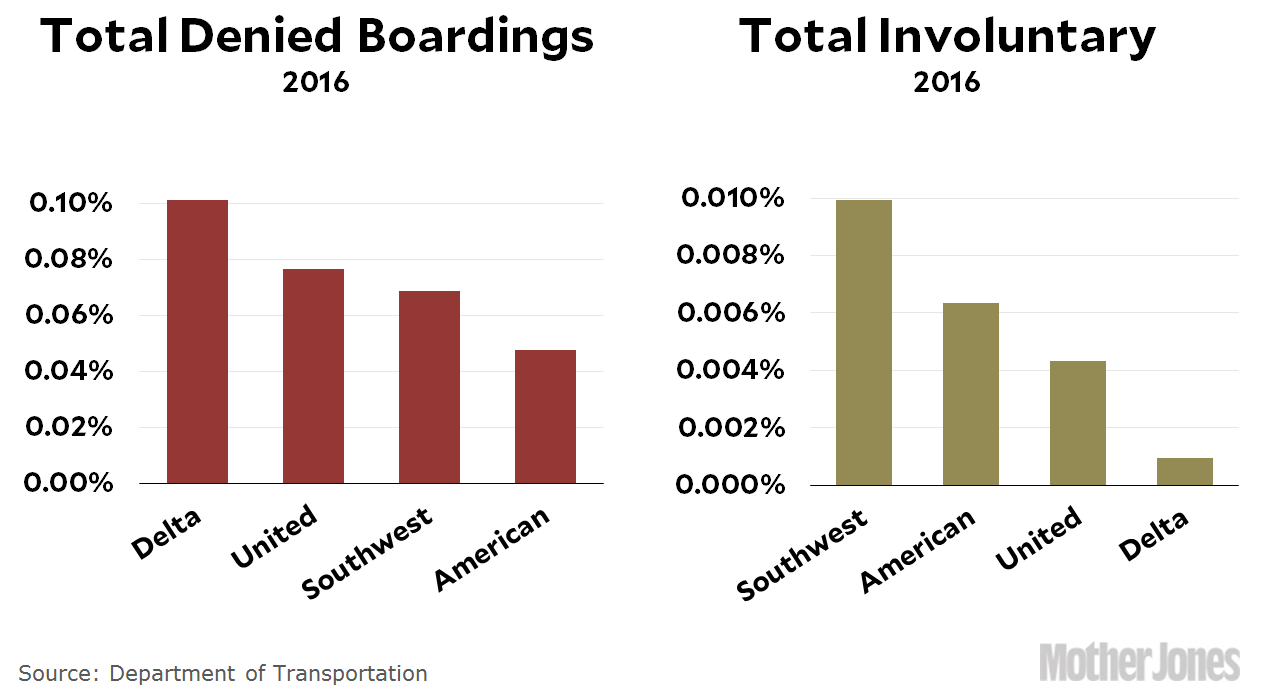With “involuntary deplanings” in the news, Nate Silver points us to some data that’s oddly intriguing. Here’s how often passengers are kicked off flights on the Big Four airlines in the United States. It comes via the Department of Transportation’s latest monthly report:

Delta overbooks at a higher rate than any other airline. However, it uses an innovative Coasian auction system during check-in to persuade passengers on overbooked flights to give up their seats for cash payouts. As a result, it has by far the lowest rate of forcing people off of flights even when they don’t want to go.
By contrast, Southwest—which has been taunting United over the Dr. Dao incident—has an average rate of overbooking, but apparently a pretty crappy system for handling overbooked flights. This gives them highest rate of forced deplanings.
United, ironically, isn’t bad on this score. Their overbooking rate is about average, and their “involuntary deplanings” rate is quite low. Depending on how you feel about things, Delta would probably be your first choice on the overbooking front, but United is a solid second.
Like it or not, about 40,000 people a year are kicked off planes against their will. Some of them were standby passengers who knew this might happen. Some weren’t. Given those numbers, the interesting thing isn’t that United had to remove one of these folks by force. The interesting thing is that apparently it’s never happened before.1
1It hasn’t happened while cell phones were recording the whole thing, anyway.
UPDATE: The original version of the chart in this post was an epic fail. I transcribed the numbers wrong, then corrected them, then had to recover from an Excel failure, and then didn’t notice that the recovery didn’t quite work. Then I used the wrong units for the y-axis. Plus the sun was in my eyes.
Anyway, it’s fixed now. And the good news is that the corrected numbers don’t really change the story. But at least now they’re correct.

















